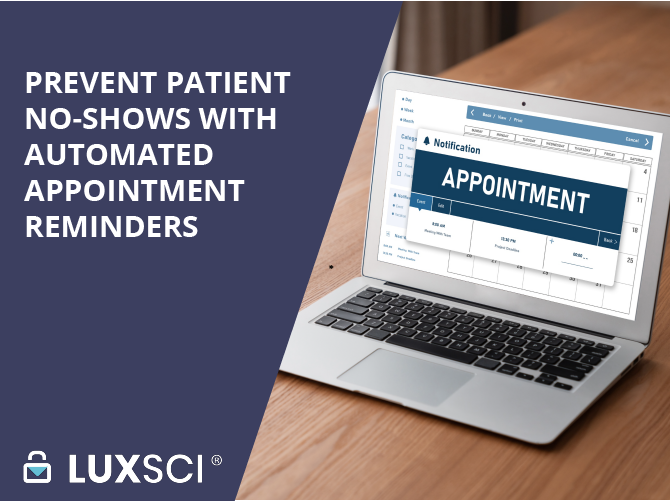Prevent Patient No-Shows with Automated Appointment Reminders
Tuesday, September 6th, 2022Missed medical appointments are not only bad for your business, but they can also negatively impact patient health outcomes. You can improve attendance and health outcomes without adding to administrative overhead by automating appointment reminders and customizing them according to patient preferences.
Why Implement Automated Appointment Reminders
There are many reasons to introduce automated appointment reminders. People are busy, and many rely on digital calendars to stay organized. Many businesses outside the healthcare industry use digital appointment reminders to improve attendance and make scheduling and rescheduling appointments as easy as possible.
Changing Consumer Preferences
Most (88%) of customers said receiving automated appointment reminders via phone and text is important to them, according to a CVS Health survey. The rapid digitization of the healthcare system due to the Covid-19 pandemic has led patients to expect a healthcare experience that fits into their lifestyles. Reminders for haircuts, car appointments, and other personal care services are extremely common, and people expect that from their healthcare providers. In addition, communication preferences are changing. Very few people answer phone calls from unknown numbers. Instead, the majority of patients prefer less intrusive email and text reminders.
Improved Health Outcomes for Patients
As the saying goes, “an ounce of prevention is worth a pound of cure.” Skipping appointments or delaying care puts patients at risk of developing more serious illnesses. Catching conditions like heart disease, diabetes, and cancer early drastically improves prognoses and allows for less expensive and intrusive interventions. Most people don’t intend to skip medical appointments, but life happens. Sending timely appointment reminders before the visit gives overbooked individuals an opportunity to reschedule without a potentially costly missed appointment.
Reduced Administrative Overhead
If your administrative staff members are tasked with making phone calls to confirm appointments, automated reminders can allow them to prioritize other tasks associated with patient care. Keeping the phone lines open to help care for patients with urgent questions improves the patient experience and keeps staff members engaged.
How to Implement Automated Appointment Reminders
Most automated reminders are sent via email, text messaging, or phone calls. We recommend surveying your patient population to find out which communication methods they prefer. By sending the message according to their preference, it increases the likelihood that they will see it and respond appropriately.
Once that is determined, use a tool like LuxSci’s Secure High Volume Email or Secure Texting to integrate with your CRM or EHR and set up trigger points and reminder templates that pull information from the database. For example, maybe you find that five business days before the appointment is the best time to send the reminder. Patients need to have enough time to read the notification and reschedule if necessary. When the appointment is five days away, a message is automatically sent to the patient reminding them of the appointment. Ideally, this message will also include rescheduling options.
One caveat- notice that we mentioned “secure” email and texting. Appointment reminders imply information about health conditions and are PHI that is protected under HIPAA regulations. These messages must be encrypted and follow other HIPAA requirements for access controls, audit logs, and more. Review our HIPAA Compliance Checklist for more information.





